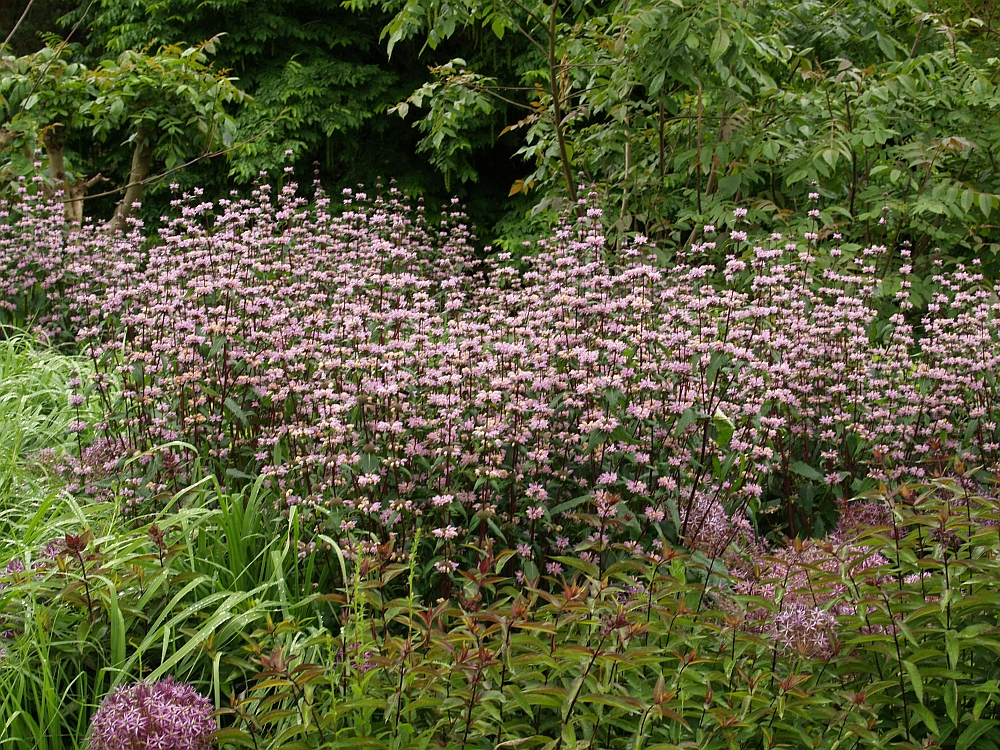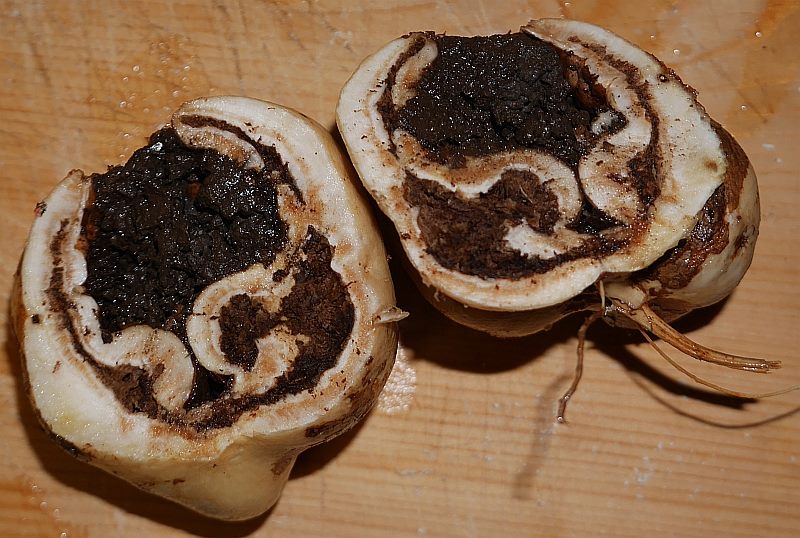In Sturtevant’s Edible Plants of the World (1919) Phlomoides (Phlomis) tuberosa (Sage-leaf Mullein or Tuberous Jerusalem Sage) , best known as an ornamental, it is noted that the roots of this plant are cooked by the Kalmyk people and call it Bodmon Sok. I have therefore been growing this plant for some time. I’ve grown it in the past in heavy soil and it’s died, but a plant I have on lighter soil from 2010 has survived at least one severe winter. I only had one plant, I heard that harvesting the tubers would kill it and I therefore planted two more plants of the cultivar “Amazone” in 2013. This form is supposedly larger in all its parts. There was also little information on how it was prepared and two reports on the Homegrown Goodness say that the tubers are bitter tasting, so I still haven’t tried it…
However, I really should next year as it would make a great Edimental :)
NB! The Russian Wikipedia page does mention that the tubers contain saponins and alkaloids…

“From the Russian Wikipedia page (translated by Google Translate, please let me know if you can provide a better translation tohttps://ru.wikipedia.org/wiki/Зопник_клубненосный )
The plant contains tannins and essential oil with lemon fragrance, whose composition has not been studied.
The tubers were found to contain saponins; in the aerial part – 0,5-6,0% alkaloids, to 0.14% ascorbic кислоты , микроэлементы — железо , магний , цинк , медь , марганец , никель ,титан
It is a good spicy taste plant. The root tubers are eaten fried, baked or boiled. In the old days they prepare their future, dried and then milled for flour and cereals. Used for the manufacture of confectionery and sauces, dairy cereal. Kalmyks added the flour into a tea.
Valuable honey plant, gives a lot of nectar.
The plant is used in folk medicine in the pneumonia, bronchitis, jaundice, hemorrhoids as an astringent, wound healing and tonic.”
Addendum: In 2017, I got round to harvesting a root. Disappointingly there was little flesh, presumably rotted away from the inside (probably too old). The taste of the flesh was “pleasantly bitter”. I must try a younger tuber next time.



